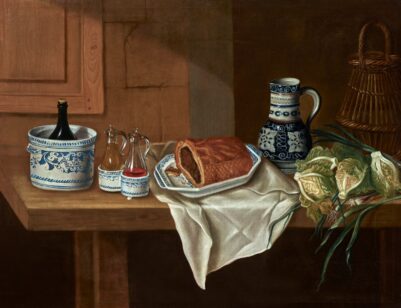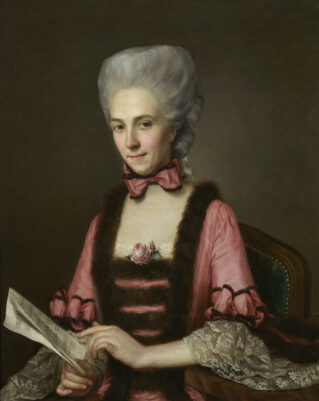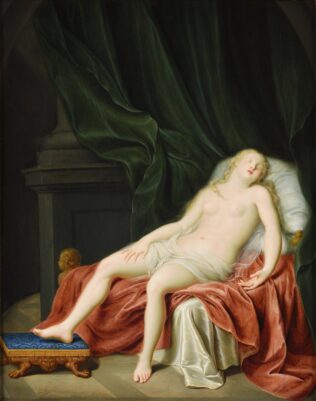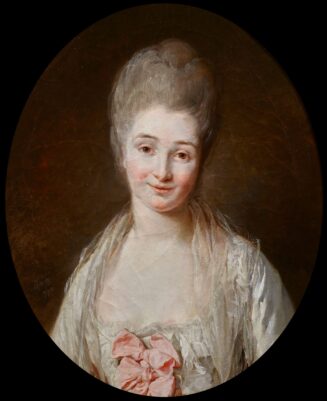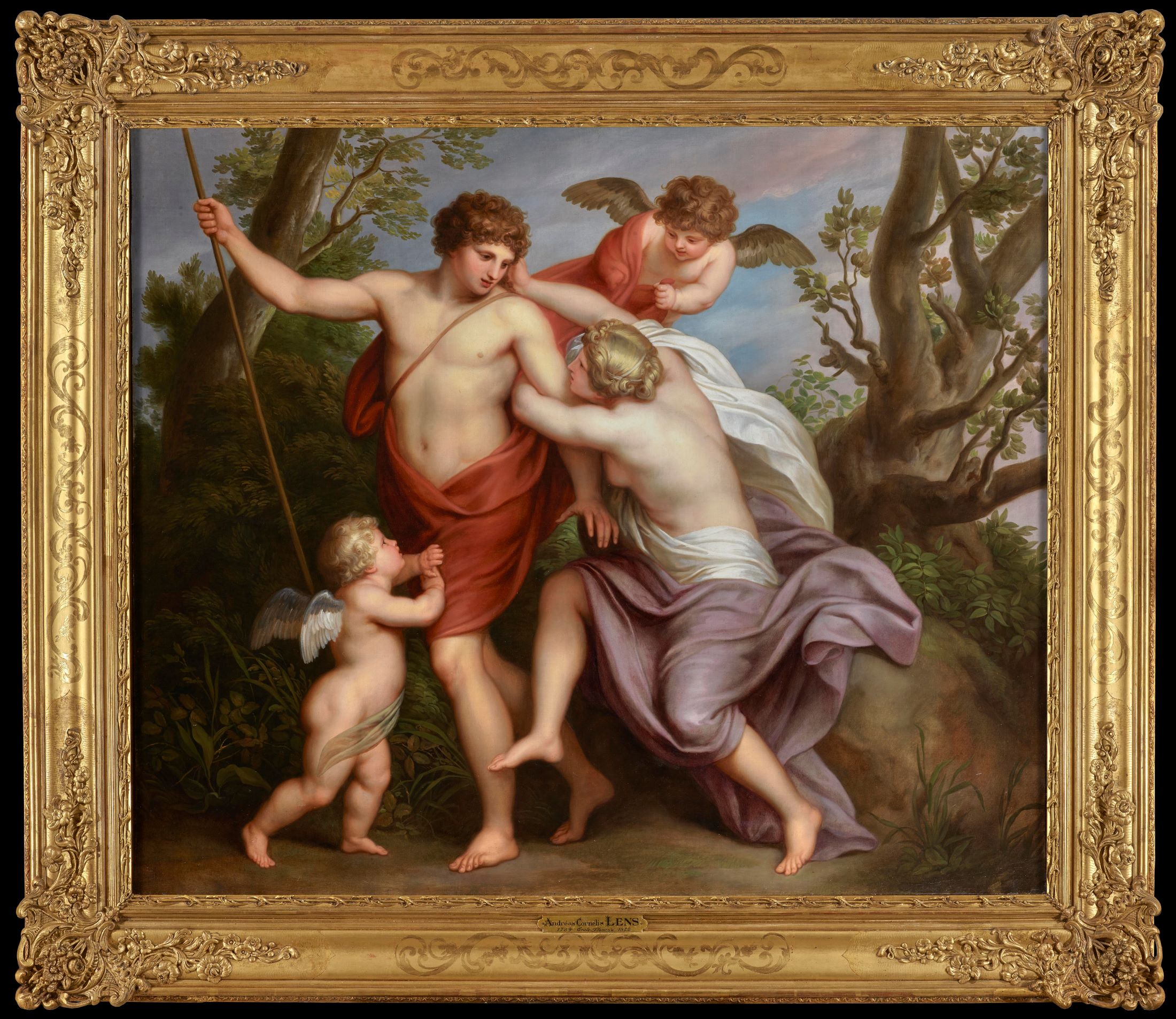
Andries Cornelis Lens
Venus and Adonis
Provenance:
Private collection, London.
Catalogue Entry
Andries Cornelis Lens was a Flemish painter, illustrator and art theoretician, and an early representative and promoter of Neoclassicism in Belgian painting. Born in Antwerp in 1739 into a family of painters, Lens trained with Karel Ykens (1719-1753) and, from 1753, with Balthasar Beschey (1708-1776). At the same time, he studied at the Antwerp Academy, where he started drawing after the Antique, and was nominated director and teacher in 1763. After becoming court painter to Prince Charles Alexander of Lorraine in 1765, Lens had the opportunity to travel across Italy, where he spent almost four years copying the old Italian masters, Raphael in particular.1 After his return to Antwerp via Paris – where Neoclassicism was in full development – he fostered the study of the Antique and Italian Renaissance masters. Inspired by the Italian academies, Lens started a lobbying campaign to break the power of the Antwerp Guild of Saint Luke over young artists. His attempts proved successful, also due to the intervention of Maria Theresa (1717-1780). The Habsburg Empress eventually issued a decree in 1773 that “freed” artists from obligatory inscription in the guilds of Saint Luke, thus condemning these institutions to a gradual abolishment.2 Following this successful endeavour, Lens received increasing commissions for altarpieces and published a book where he discussed the costumes, ornaments and furnishings of ancient civilizations, illustrated with 160 engravings by Pieter Franciscus Martenasie.3 In 1780, Lens moved to Brussels, where he found a new patron in Prince Albert Casimir, Duke of Teschen. In 1803, he was the co-founder of the Société de peinture, sculpture et architecture de Bruxelles. In 1815, he became a member of the Royal Netherlands Academy of Fine Arts and Sciences, and was made a knight of the Belgian lion by King William I of the Netherlands.4
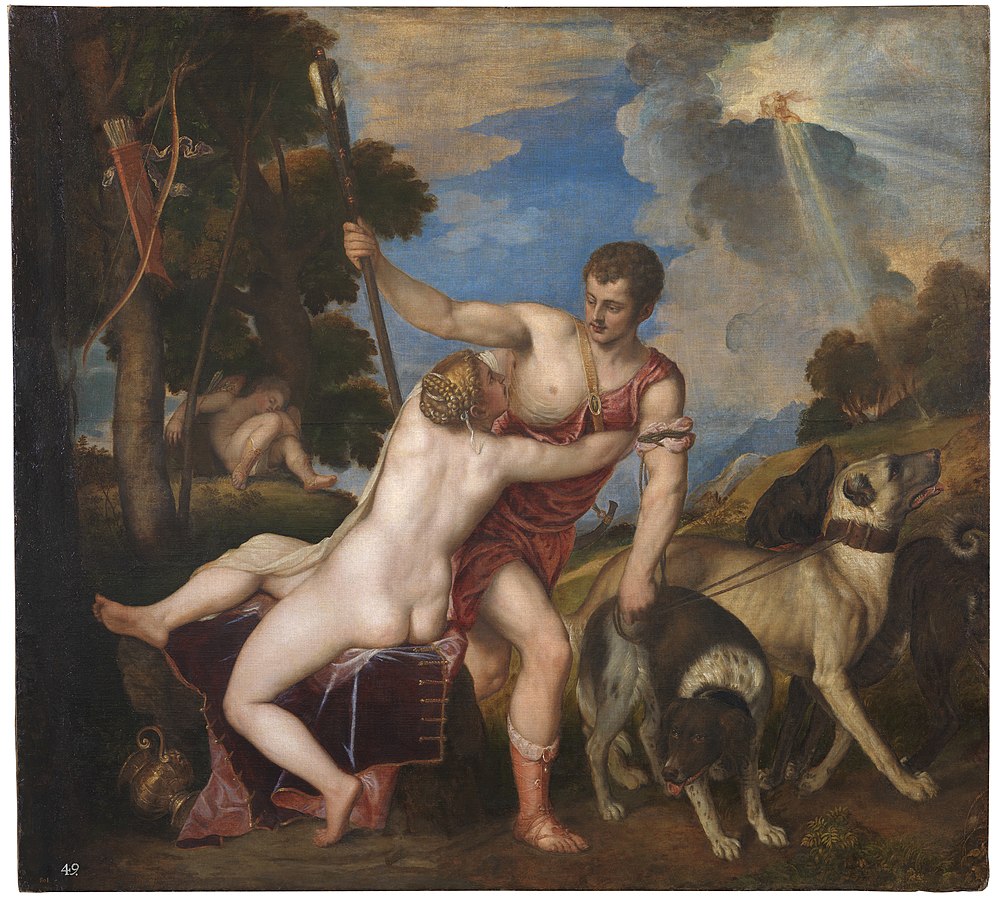
Fig. 1. Titian, Venus and Adonis, 186 x 207 cm, oil on canvas, 1554, Museo del Prado, Madrid.
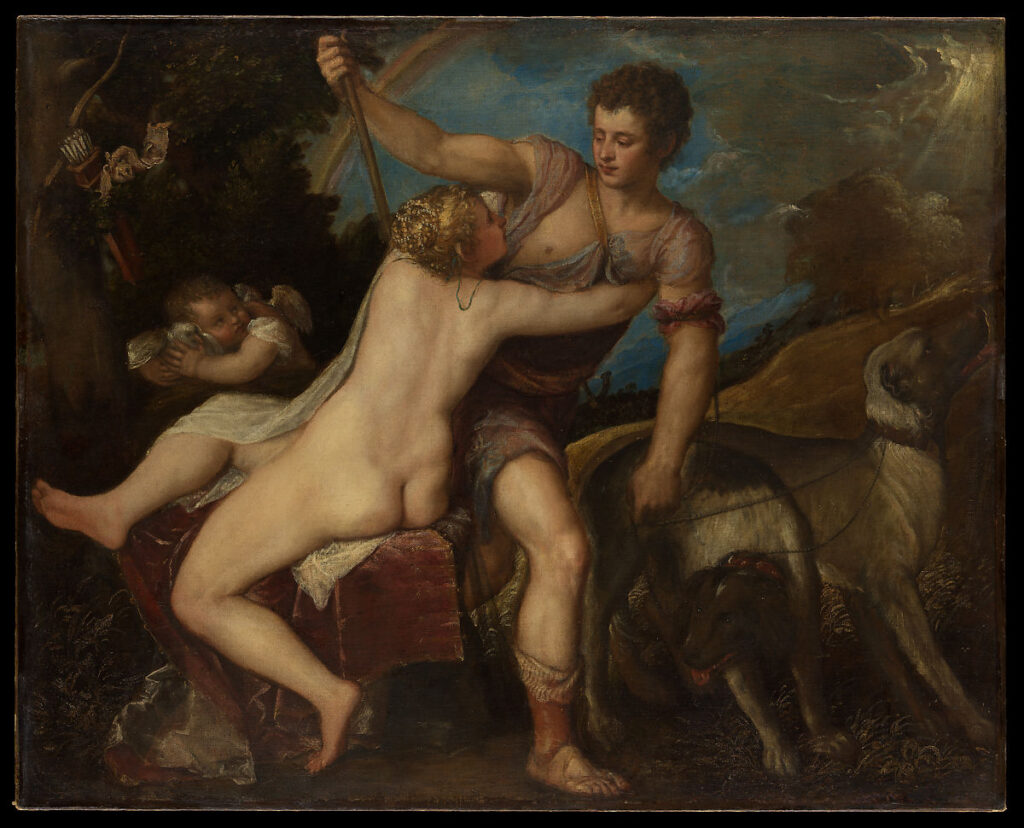
Fig. 2. Titian, Venus and Adonis, 106,7 x 133,4 cm, oil on canvas, 1560-1570, The Metropolitan Museum of Art, New York.
Throughout his career as a painter, Lens specialised in historical painting of Biblical and mythological subject, as exemplified by the exquisite present work. Its subject, Venus and Adonis, derives from Ovid’s Metamorphoses. In book X, the Latin poet narrates the goddess Venus’ love for the beautiful, young huntsman Adonis, who was tragically killed by the Caledonian boar. Though Ovid did not describe the last parting of the two lovers, Lens decided to depict the moment of maximum tension in the story. Venus – a beautiful woman, her blonde hair elegantly coiffed, half-naked with draperies covering the lower part of her body and encircling her right arm – is depicted clinging to Adonis. Filled with foreboding about his imminent death, she is desperately trying to restrain him from going off to the fatal hunt. Adonis, traditionally presented as a half-naked, handsome hunter, looks down to Venus impassively, extracting himself from her embrace, impatient to go hunting. The lance in his right hand signals his resolve. The goddess’s gesture is echoed by two winged Cupids. On the lower left, one of them tries to stop Adonis by pushing his hands against the man’s thigh. On the upper right, a second, flying Cupid tries to retain Adonis by pulling his drapery. As per the story, the scene is set outdoors, in the woods where the two gods were living together.

Fig. 3. Andries Cornelis Lens, Venus and Adonis, 100 x 118 cm, oil on canvas, ca. 1765, Kunsthistorisches Museum Gemäldegalerie, Vienna.
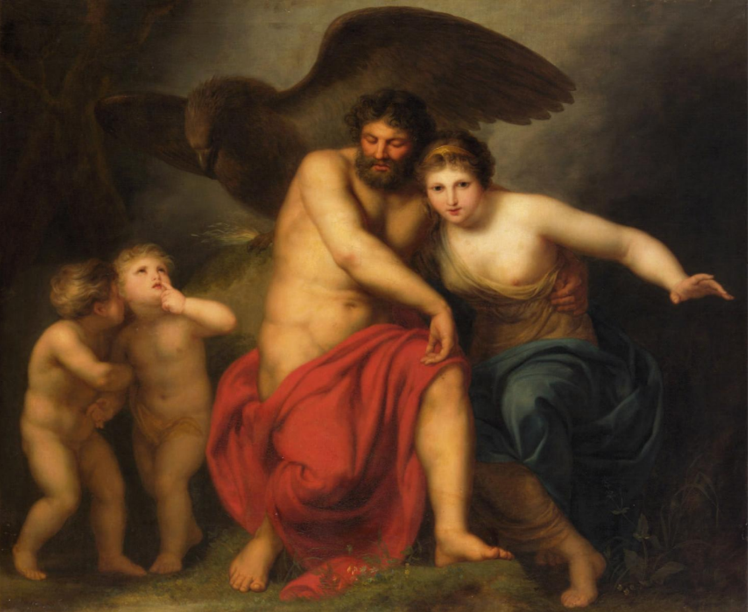
Fig. 4. Andries Cornelis Lens, Jupiter Asleep in the arms of Juno, oil on canvas, 109.5 x 133 cm., 1775, Kunsthistorisches Museum Gemäldegalerie, Vienna.
The immediate precedent for the present painting is to be found in Titian’s Venus and Adonis, one of the most successful designs of the artist’s late production. Titian has been credited with inventing the iconography of the so-called leave-taking of Adonis, which was a Renaissance embellishment of the story told by Ovid. He originally executed two versions of the theme – one for Philip II and the other for the Farnese Family – which became models for numerous replicas. At least thirty versions are known to have been executed by the artist and his workshop across four decades, two of the most famous being those in the Museo del Prado (Fig. 1) and in The Metropolitan Museum of Art (Fig. 2). It is very likely that Lens encountered such a theme and iconography in Italy, where he might have seen and copied versions of Titian’s work.
Although the present painting is undated, its debt towards this Italian master certainly places it after Lens’ sojourn in Italy. Indeed, classical myths started pervading Lens’ paintings following his return to Antwerp, several of which also illustrated episodes from Ovid’s Metamorphoses. These include The Apulian Shepherd changed into an olive tree (Fig. 3) and the Jupiter Asleep in the arms of Juno (Fig. 4) in the Vienna Kunsthistorisches Museum, which share a similar style with the present work. Such paintings epitomise Lens’ attempt to alter Flemish Baroque taste and tradition, which he considered decadent and outdated. Not only such works spoke of Classical literature and culture. They also presented an innovative style, for which the painter Julien de Parme defined Lens as a “peintre galant, un peintre à la mode” (a gallant, fashionable painter),5 and which earned him the fame of “Régénerateur de la peinture en Flandre” (regenerator of painting in the Flanders).6 Clear drawing, precise lines, sober compositions and a polished surface were the keys to such a renovation. In Venus and Adonis, the idealised beauty of the two figures echoes Lens’ discourse on the selection of beauty in nature, a concept that also resonated in the writings of Winkelmann, Mengs and Batoni – whom Lens frequented in Italy – and in his own book Du bon gout, ou De la beauté de la peinture, considérée dans toutes ses parties.7 The gods’ draperies seem to be modelled on ancient bas-reliefs, which Lens assiduously copied in Rome, Tuscany and Campania, and that he brilliantly described in his Le Costume de Plusieurs Peuples de L’Antiquité.8 A pioneering promoter of Neo-classical ideals, Lens contributed to the renovation of painting in the Flanders, before Jacques-Louis David would set the trend in European painting.
1 For information on Lens’ stay in Italy, see “Les premiers Rénovateurs,” in Les D. Coekelberghs, Les Peintres Belges à Rome de 1700 à 1830 (Brussels and Rome, 1976), pp. 205–206. 2 Frans Baudouin, “Bouw, beeldhouw- en schilderkunst,” in Antwerpen in de XVIIIde eeuw: instellingen, economic, cultuur (Antwerp, 1952), p. 227. 3 A.C. Lens, Le Costume de Plusieurs Peuples de L'Antiquité; Le Costume ou Essai sur les Habillements et les Usages de Plusieurs Peuples de L'Antiquité, Prouvé par les Monuments, (Liége: Impr. de J.F. Bassompierre, 1776). 4 For biographical information on the artist, see A. Jacobs, A.C. Lens, 1739-1822, (Antwerpen: Koninklijk Museum voor Schone Kunsten, 1989) and 1770–1830: Autour du Néo-classicisme en Belgique (exh. cat., Brussels, Mus. Ixelles, 1985–6), pp. 67-70. 5 1770–1830: Autour du Néo-classicisme en Belgique, p. 68. 6 Ibid., p. 69. Also, Coekelberghs defined Lens as one of the first renovators of the Baroque tradition. See D. Coekelberghs, Les Peintres Belges à Rome de 1700 à 1830, p. 204. 7 Andries Cornelis Lens, Du bon gout, ou De la beauté de la peinture, considérée dans toutes ses partie, (Bruxelles: A. J. D. De Braeckenier, 1811). 8 See note no. 3.
Condition:
A perforation (approx. 1 cm) and damages (approx. 1 cm) can be detected at the lower left and restoration at the lower right.
